New research throws light on 200-year-old dargah near CST for man who made baskets fly in protest against demanding employer

Tucked away next to the latticed monolith, Haj House, near CST, is an unassuming archway that opens into a Muslim shrine. On Friday afternoons, a devout stream walks into the courtyard to offer prayers. The shrine is architecturally stunning, with flooring made of kaleidoscopic Minton tiles and a cupola that has intricate glasswork inside. This site, which is popularly known as Pedro Shah Dargah, has become the subject of anthropologist Sarover Zaidi's academic research and exhibition, titled 'The case of the flying baskets or how to investigate a city by the sea?'.
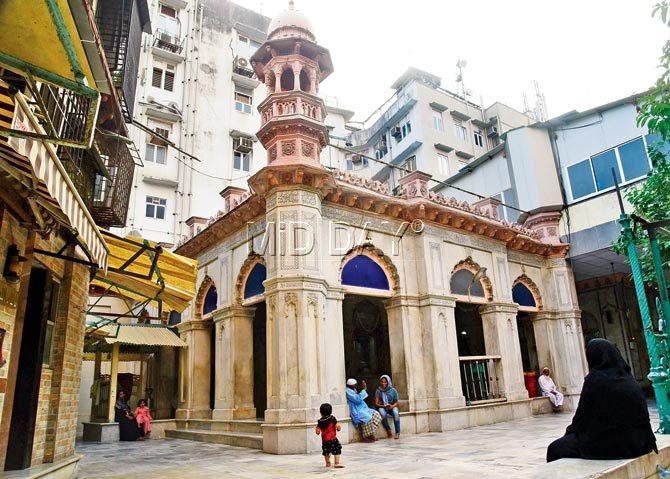
The roughly 200-year-old shrine near CST is dedicated to Pedro Shah Baba, an 18th century porter and Sufi saint. Pics/Atul Kamble
ADVERTISEMENT
Zaidi's research explores the legend of Pedro Shah Baba — an 18th century Sufi saint — to whom this roughly 200-year-old dargah is dedicated, and looks into similarities in narratives that are available across the shores of the Indian Ocean. Incidentally, there is no pictorial evidence of this saint in the city's history books, making Pedro Shah Baba a fascinating subject of study.
A saint called Pedro
The unusual bilingual name, a combination of the Portuguese Christian and Islam, has been of interest to many, right from intellectuals to the caretakers of the dargah, which is officially known as Sayyed Abdullah Shah Kadri Dargah. Zaidi narrates the legend of Pedro Shah, a seafarer and a pettiwala (a wicker basket load carrier), who worked at the Bombay docks in the mid or late 1700s. "The story goes that when his Parsi employer beat him for not immediately loading the baskets during the lunch hour, Pedro Shah got up in a slow rage, walking briskly through the bazaars. At that moment, his baskets miraculously flew beside him. Today, revered as a Sufi saint, his shrine is visited by the working classes," says Zaidi of Pedro Shah, who is buried below the dargah.
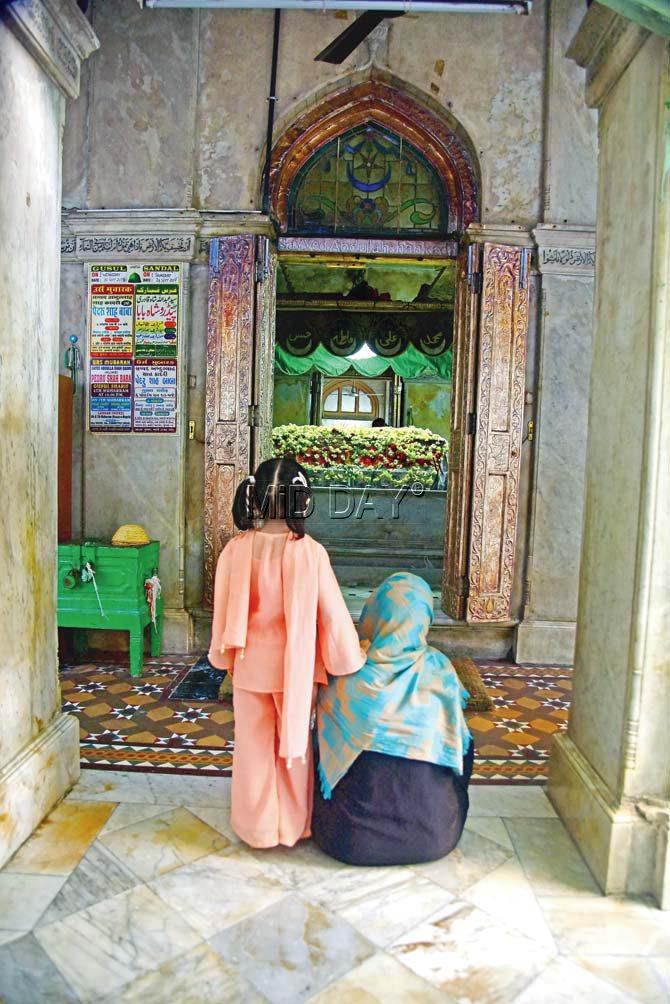
The shrine below where Pedro Shah Baba is buried. Twice every year, on Muharram, the burial ground of Shah Baba is opened for public viewing
In Bombay Islam: The Religious Economy of the West Indian Ocean, 1840-1915, written by Nile Green and published in 2011, the scholar cites the many tales of how Pedro Shah came to bear this name. There were local reports, including the 1901 census report and editions of the Bombay Gazetteer that talk of a Portuguese sailor, who converted to Islam two centuries ago. There was also a version from a local bookseller, who said that Shah was an Arab merchant, who came to Bombay from Makran, along the coast of the Persian Gulf, and died here in 1799. He earned the name of Pedro from the Portuguese, who likened him to St Peter.
Haji Mohamed Umer Khan, 79, the caretaker at the shrine, has another version of the story to offer. "Pedro Shah is an alias for Sayyed Abdullah Shah Kadri. He was a seafarer from Baghdad who travelled across the Indian coast with the Portuguese, who referred to him as Pedro," says Khan. Khan's family has been living in the premises for six generations, working as the khadim, or caretakers.
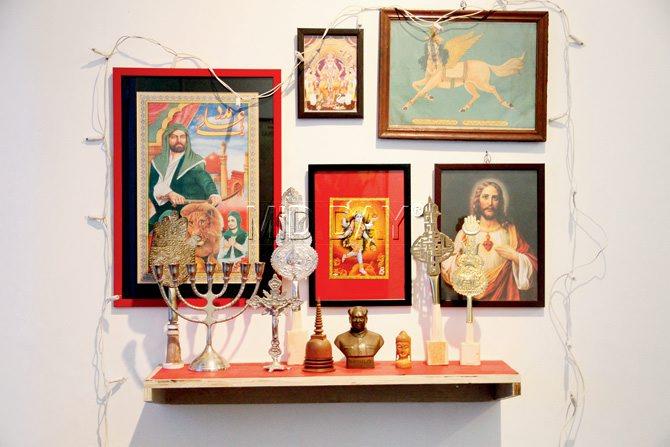
Zaidi's art studio format exhibition at Khoj, New Delhi, brings together religious motifs that mark the area of Bhendi Bazaar, including Pedro Shah's Dargah
A righteous miracle
Green's book also narrates an interesting account of "the saint's power over the capitalistic cityscape of Bombay". In 1903, the saint was attributed with bringing down the Sita Ram Building near Crawford Market. The building, which faced the shrine, housed Windsor Bar on its ground floor and was partonised by British sailors. Despite repeated complaints from the dargah's caretakers to authorities regarding the bar, not much came out of it. When the building collapsed, mostly due to structural damages, locals were convinced that the saint had heard their prayers and performed a miracle.
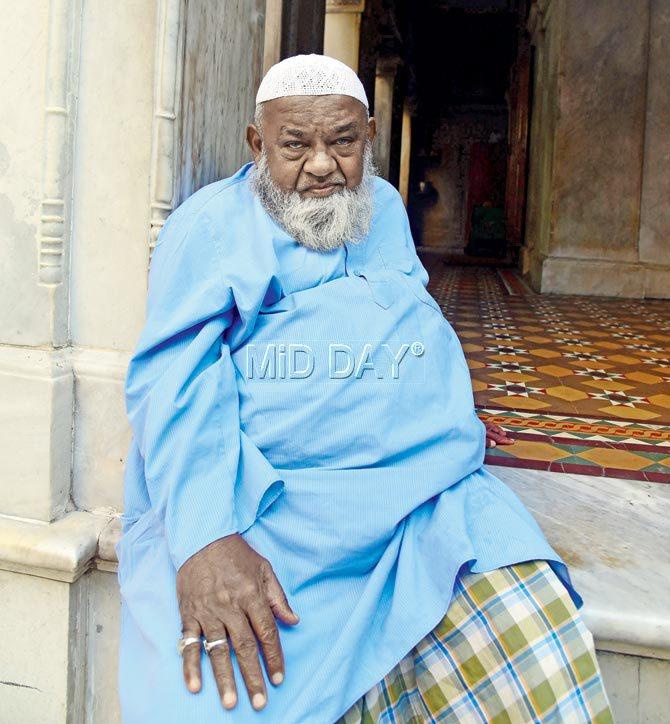
Haji Mohd Umer Khan
Labour movement
Zaidi's study of Pedro Shah has less to do with the origin story and more to do with how the saint is received today. For the last six years, the New Delhi-based researcher has been studying the area around JJ Flyover, especially the religious architecture of the Bene Israel Jews, Shia Muslims and Christians of Bhendi Bazaar, for a book that she is writing. Her academic research was presented in an art studio format last week at Khoj International Artists' Association in New Delhi as part of their Coriolis Effect III project.
Instead of the study of the fabric of morality in which the tale of Pedro Shah was enmeshed, as recorded by Green, Zaidi's take on the figure is more imaginative and located in economic and class struggles. "Here is a porter, who is able to make baskets fly and respond to an oppressive situation through a show of power. While I don't want to classify it as a miracle, because that belongs to some magical terrain, there is the idea of responding to power with a show of power. Pedro Shah could possibly be the first labour organiser in Bombay."
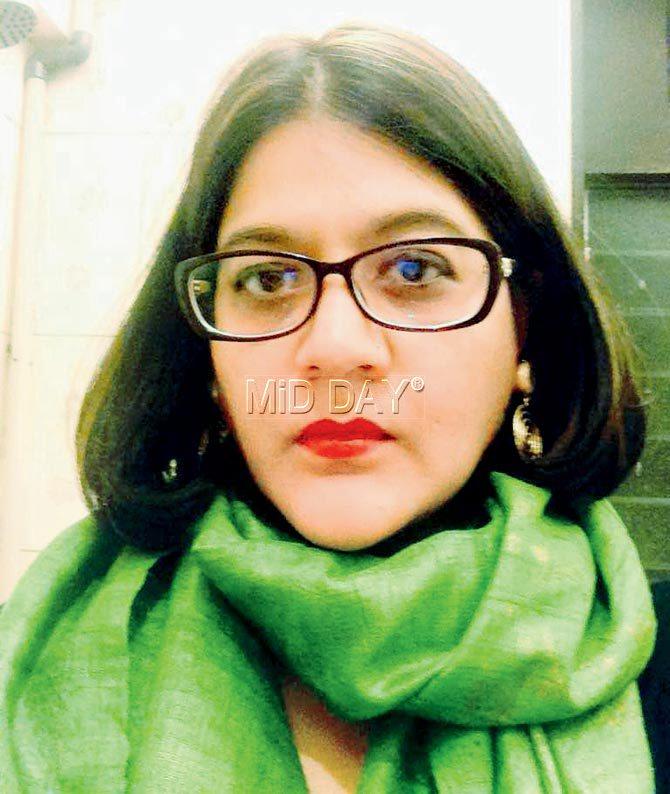
Sarover Zaidi, Anthropologist
Zaidi also traces a similar story on the opposite coast across the Indian Ocean, in Kenya. As an anthropologist, she is interested in looking at the similarity of motifs that existed across the seas. "Author MG Vassanji narrates a similar tale about railroad workers in North Kenya and tales of their shrines with Sufis and flying baskets," says Zaidi.
The researcher looks at these shrines as part of the texture of everyday religiosity. "These are more intimate spaces than the big religious centres," she says. More importantly, Zaidi attempts to look at the relationship between these so-called "religious" sites and the labour and working class. The story of Pedro Shah, she says, is about resistance from the working class. "There is a tilt in the city's labour history towards mills, but we never think of places of religiosity as having this resonance. Consider Haji Ali, who was also a seafarer and to whom a prominent dargah is dedicated," she states.
Meanwhile, Khan, the caretaker of the Pedro Shah Dargah, sits by a pillar in the evening hours and offers prayers. He tells us, "Whenever I feel a lot of tension, all I have to do is sit here for 10 minutes. Everything becomes so peaceful. You must have felt it too, right?"
 Subscribe today by clicking the link and stay updated with the latest news!" Click here!
Subscribe today by clicking the link and stay updated with the latest news!" Click here!







